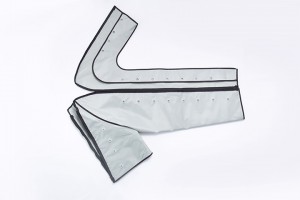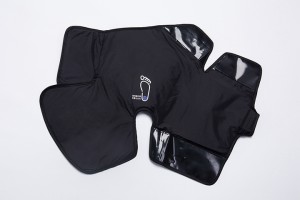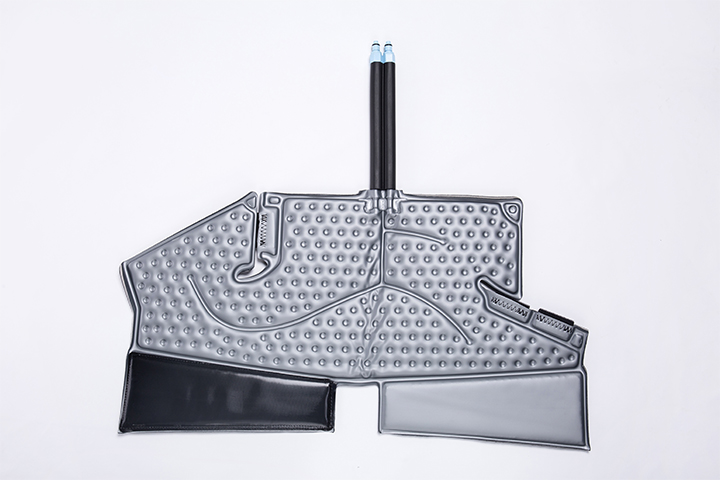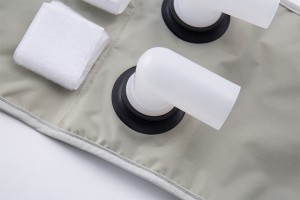Deep vein thrombosis (DVT) refers to the abnormal coagulation of blood in deep veins, which belongs to the disease of venous reflux obstruction of lower limbs. Thrombosis mostly occurs in braking state (especially in orthopedic surgery). The pathogenic factors are slow blood flow, venous wall injury and hypercoagulability. After thrombosis, most of them will spread to the deep vein trunk of the whole limb, except a few can be ablated by themselves or limited to the location of thrombosis. If they cannot be diagnosed and treated in time, most of them will develop into sequelae of thrombosis, which will affect the quality of life of patients for a long time; Some patients may be complicated with pulmonary embolism, causing extremely serious consequences.
Reasons for DVT
In clinical practice, only 10%~17% of DVT patients have obvious symptoms. It includes lower limb swelling, local deep tenderness and foot dorsum flexion pain. The most serious clinical feature and sign of DVT development is pulmonary embolism. The mortality rate is as high as 9%~50%. The vast majority of deaths occur within minutes to hours. DVT with symptoms and signs is more common in patients after surgery, trauma, advanced cancer, coma and long-term bedridden. Prevention is the key to deal with DVT. Primary prevention should be carried out for all patients undergoing major lower limb surgery The preventive measures for acute venous thrombosis of the lower extremities include: avoiding putting pillow under the lower leg after operation and affecting the deep venous return of the lower leg; Encourage the patient's feet and toes to move actively, and ask them to breathe deeply and cough more; Let the patient get out of bed as soon as possible and wear medical elastic stockings when necessary. More attention should be paid to the elderly or heart disease patients after operation.
The guiding significance of judging the onset time to the treatment plan
Venous thrombosis is like cement, which can be washed away as soon as possible, but once it forms a clot, it cannot be dissolved. Although this analogy is not very appropriate, it is a fact that venous thrombosis begins to be partially organized tens of hours after its formation. The organized venous thrombosis is difficult to be solved by thrombolysis. Surgical thrombus removal is also not suitable. Because the organized thrombus is tightly attached to the vein wall, forced thrombus removal will cause damage to the vein wall and cause more extensive thrombosis. Therefore, early diagnosis is very important.
How to diagnose lower limb deep vein thrombosis early
Although there is no obvious symptom of early deep vein thrombosis, experienced doctors can still find some clues through careful physical examination. For example, deep pain when squeezing the calf belly often indicates calf vein thrombosis (called Homan sign in medicine). This is because of aseptic inflammation of surrounding tissues when venous thrombosis occurs. Similarly, tenderness at the root of thigh often indicates femoral vein thrombosis. Of course, once deep vein thrombosis is suspected, the blood D2 polymer should be detected as soon as possible, and the deep vein should be detected by B-ultrasound to make a definite diagnosis. In this way, most cases of DVT can be diagnosed early.
Company profile
The company has its own factory and design team, and has been engaged in the production and sales of medical products for a long time. We now have the following product lines.
①Compression massage machines (air compression suit、medical air compression leg wraps、air compression boots、 etc)and DVT series.
③Reusable tourniquet cuff
④Hot and cold therapy Pads(cold compression knee wrap、cold compress for pain、cold therapy machine for shoulder、elbow ice pack etc)
⑤Others like TPU civil products(inflatable swimming pool outdoor、anti-bedsore inflatable mattress、ice pack machine for shoulder ect)
Post time: Dec-09-2022





